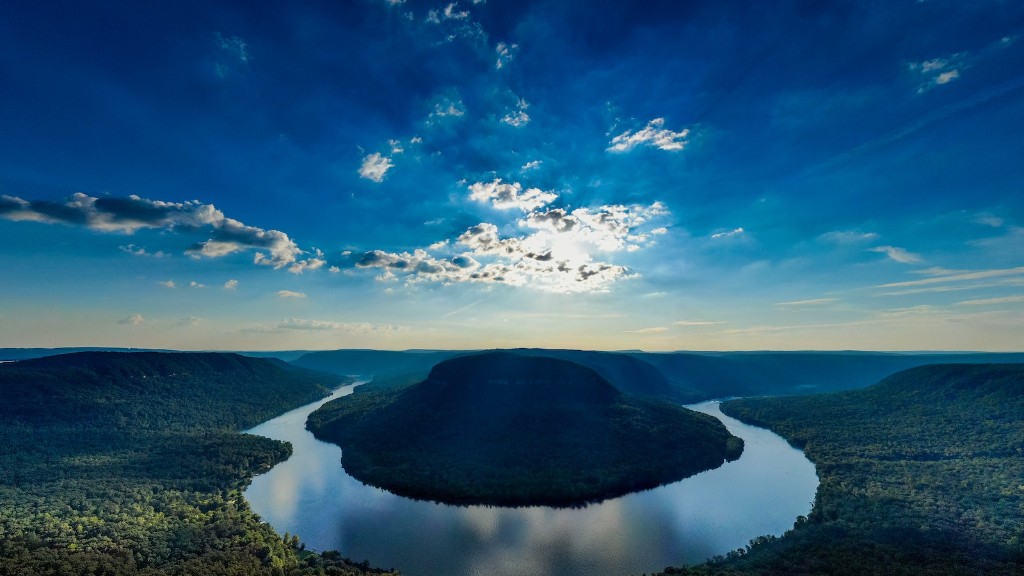Introduction to the Nile River
The Nile River is one of the most important rivers in the world, stretching more than 4,000 miles from its source in Central Africa to its mouth in northern Egypt. It is the longest river in Africa and the second longest river in the world, and is the lifeline for many people along its route. Every year, the annual flooding of the Nile provides much-needed water to the region, irrigating farming land and allowing for the growth of a wide range of crops such as wheat, barley, and beans. It is also a major source of energy and transportation, with a range of hydroelectric power plants along its banks and many people traveling its waters in boats to these cities.
The Source of the Nile
The source of the Nile River is a closely guarded secret, with many sources claiming it is either Lake Victoria or one of the many tributaries in the area. It is commonly accepted, however, that the White Nile, the longer of the two main branches, has its source at Lake Victoria in Uganda. The Blue Nile originates in Ethiopia, while the Atbara, which meets the two in Khartoum, Sudan, is the last of the major tributaries.
The Journey of the Nile
The journey of the Nile River starts in the Central African highlands, where the White Nile has its source. From there, it meanders through the vast African expanse for thousands of miles, eventually merging with the Blue Nile in Khartoum, Sudan. After this vast journey, the river continues through Egypt, past the great cities of Cairo, Luxor, and Aswan. It then passes through Lake Nasser, a vast man-made lake created by the construction of the Aswan High Dam, and out into the Mediterranean Sea.
History of the Nile
The Nile has been an integral part of Egyptian civilization since ancient times. The regular floods which the river provided was a major source of fertile silt, enabling crops to flourish in the typically arid region. The Egyptians even worshipped the Nile as a goddess and attributed its regular flooding to the tears of joy shed by the god Hapi when Osiris, god of the afterlife, was reunited with his sister, Isis. The great cities of ancient Egypt were all built on the banks of the Nile and some of the oldest and most impressive monuments of antiquity still stand along its banks.
The Impact of the Nile River
Today, the Nile River is the lifeblood of many African countries, providing much-needed water for crop cultivation, electricity generation, and transportation. Its economic importance to Egypt cannot be overstated and it continues to be one of the most important regions for international trade and diplomacy. In recent years, the construction of dams in the upper reaches of the Nile has caused tensions between the countries in the region, and managing the Nile’s resources has become a priority for decision makers.
Environmental Impact of the Nile
The environmental impact of the Nile is far-reaching and serious. Due to the construction of dams in the upper reaches of the river, much of the silt that would otherwise be washed into the sea has been blocked, leading to a decrease in the fertility of the land in the areas where it is needed most. In addition, the dams have caused water levels to fluctuate, leading to drought in some areas and floods in others. In the lower reaches of the river, overpopulation and agriculture have caused the river to become heavily polluted, with chemical runoff from the land and plastic and chemical waste entering the water.
The Future of the Nile
The future of the Nile depends on the balance between the needs of the countries along its length and the environmental impacts of using its water. In order for the river to remain viable for generations to come, its resources must be managed responsibly and sustainably. To this end, the countries of the Nile Basin are working together to ensure that the environment is protected and the river is used in a way that benefits everyone.
Preservation Efforts Along the Nile
The countries of the Nile basin, in particular Egypt, have made efforts to protect the river and its resources, despite the competing interests of the countries along its length. In 2003, the signatories of the Nile Basin Initiative, a longstanding effort to manage the river’s resources, implemented the Cooperative Framework Agreement, the first international treaty signed to protect and promote the sustainable use of the Nile’s water. This treaty has been instrumental in helping the countries of the Nile basin to come together and find a way to protect the river for future generations.
Developments in Agriculture and Technology
In recent years, there have been a number of developments in agriculture and technology along the Nile that have revolutionized the way water is managed and used. Improved irrigation techniques, the introduction of drought-resistant crops, and the adoption of precision farming techniques have all helped to reduce the need for large-scale water projects. Hydropower plants have been constructed to provide electricity to millions of people while dams have been built to conserve water, control flooding, and generate power.
The Importance of the Nile
The Nile River is an essential resource for the countries and people it touches. It provides much-needed water, energy and transportation to millions of people and is responsible for nourishing the land and driving much of the region’s economic development. While there are challenges that must be addressed, the way in which the nations of the Nile Basin have come together to protect the river’s resources serves as a beacon of hope for a better, more sustainable future.


